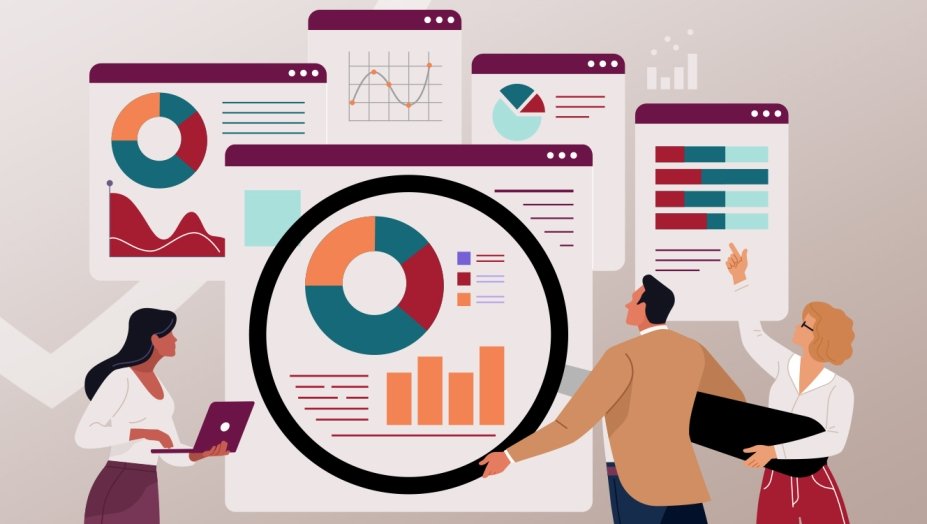Building Confidence in Statistical Analysis: Why Learning to Work with Data Matters for New Researchers
Mastering the basics of data analysis empowers early-career researchers to turn uncertainty into confidence and strengthen the quality of their scientific work.

For many novice clinical researchers, the thought of performing their own data analysis can feel overwhelming. It is tempting to hand off the responsibility to others or to assume that statistics is something best left to other trained team members. But according to Brian Healy, PhD, faculty member for the Foundations of Clinical Research certificate program at Harvard Medical School, developing even foundational skills in statistical analysis can significantly strengthen a researcher’s independence, confidence, and ability to generate meaningful evidence.
“Learning the fundamentals of statistical analysis will improve the overall quality of your research, regardless of how much statistical analysis you end up performing,” Healy says.
At the heart of that quality improvement is the ability to ask the right scientific questions. Researchers who understand statistics are better equipped to define exposures, outcomes, and the relationships they are hoping to explore. As Healy explains, “The most important step in any statistical analysis is determining your scientific question and what you are trying to estimate using your data.” Learning the basics of statistics gives early-career investigators the language and logic to frame their questions with precision.
Starting Small: Building Skills in Stata
A common misconception among new researchers is that statistical analysis begins with running models. In reality, one of the most important early skills is effective data management, which includes cleaning datasets, creating new variables, and ensuring that the exposure, outcome, and covariates are accurately structured.
Healy encourages new learners to begin by mastering data management and linear regression in a statistical software package like Stata. “Nearly every data analysis requires some amount of data management,” he notes. Once researchers have established a clean dataset, linear regression becomes an essential next step.
“Learning how to fit a linear regression model in your statistical software package and how to interpret the results will allow you to understand the relationships between your variables,” he adds. Many advanced techniques build on this foundation, so getting comfortable with these basics can help new investigators gain momentum early in their research careers.
The Impact of Hands-on Experience
Acquiring practical experience with statistical software does more than sharpen technical skills. It also reshapes the way researchers design studies and interpret results. According to Healy, “Gaining hands-on experience will allow a new researcher to understand how to formulate the scientific question so that the analysis can be completed.” Working directly with data builds intuition about how variables behave, what assumptions are being made, and how results can be misinterpreted if the underlying structure is misunderstood.
It also makes researchers more attuned to the mechanics of the tools they use. “Although this may not be the most interesting part of an analysis,” Healy says, “it is critical to ensure that the results are interpreted correctly.”
Statistical Confidence Fuels Scientific Independence
As researchers progress in their training, the ability to confidently navigate data becomes a critical differentiator. Those with basic statistical literacy are better positioned to publish, collaborate, and lead. “Gaining confidence with data analysis will allow a new clinical researcher to become a more complete researcher,” Healy says. “In collaboration with your statistician, you will ensure that you have an appropriate analysis plan, and can assess whether more complex techniques are required.”
Rather than relying entirely on a statistician to drive the process, confident researchers can engage in meaningful back-and-forth about study design, sample size, and modeling choices. They are also better equipped to explore their own data, test preliminary ideas, and develop a clearer understanding of what their findings actually show. This balance leads to stronger publications and more successful grant applications, and it can open the door to long-term academic and research independence.
Overcoming Statistical Anxiety
For new researchers, learning to analyze data can feel overwhelming at first. However, with structured practice and the right support, early uncertainty often gives way to confidence. Healy encourages researchers to begin with manageable tasks, such as creating graphics or building a simple summary table. These small steps help build familiarity with statistical tools and reduce the fear often associated with data analysis.
“No one learns statistics the first time they hear it,” he emphasizes. “But everyone is able to learn statistics with practice.”
This mindset is central to the Foundations of Clinical Research program at Harvard Medical School. The curriculum introduces learners to biostatistics through a carefully sequenced series of hands-on exercises. Participants work with real-world data to practice data management, build regression models, and develop statistical reasoning. Throughout the program, expert faculty provide structured guidance and feedback to support each learner’s progress.
The aim is not to train every clinician to become a statistician. Instead, the program equips researchers with the tools to ask better questions, think more critically about data, and collaborate more effectively with methodologists. In today’s research landscape, where data skills are increasingly essential, these abilities are fundamental. For those starting their journey in clinical research, building confidence in statistical analysis can be one of the most important steps toward long-term enduring success.
